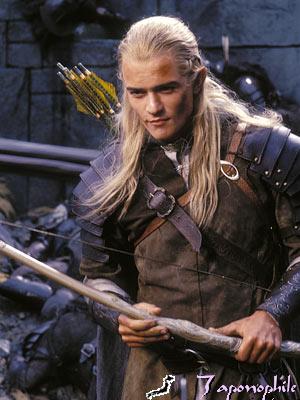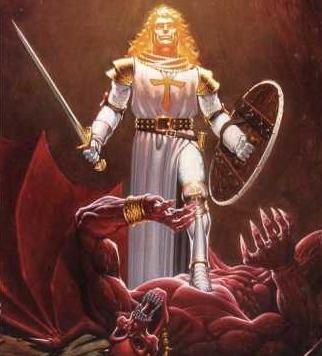 |
| Gonna be a good day! |
I've been giving thought recently to the title of this blog...playing to win. What does that mean in regards to D&D?
A lot of people struggle with that because they do not look at the mechanical side of D&D. They do not look at the nature of the game itself. Time and time again, I've been in discussions, on message boards or perusing blogs and seen that there is very little understanding about the goal of D&D. Why is this so? Probably because D&D is unlike most other games. There is so much one can do in D&D that it seems impossible to pin down an actual purpose to the game as designed. What we'll do first is dismiss the most common theory...
"The point of D&D is to have fun!"
Wrong. Inaccurate. Mistaken.
The problem with this statement is that it mistakes the ACT of playing Dungeons & Dragons with the play of Dungeons & Dragons.
Follow me? Probably not.
Separate the activity of sitting down with your friends and engaging in a game from the actual game itself. If it helps, consider a game like Call Of Duty.
 |
| Uhh...close enough... |
Imagine you are sitting with your friend, let's call him Anthony, and you are playing Call Of Duty with him against the computer. Someone comes up to you and says "Hey, why are you playing Call Of Duty?"
...
The answer is obvious right? "It's fun" Clearly, you are taking part in an activity with a friend because you both find it enjoyable. This is pretty much obvious.
Now, same scenario, but this time the person comes over and looks at the game, having never seen the likes of it, and says "What's the point of this game?"
Would you say "To have fun"? Of course not because you'd look like a moron.
You would answer with something like "To shoot all the bad guys" or something of the sort.
Now, realize that Dungeons & Dragons is no different except that far fewer people are familiar with the nature of a game like Dungeons & Dragons than with something like Call Of Duty.
The question "What is the point of Dungeons & Dragons?" could otherwise be stated as "What does the game expect from you?" or "What do you try to achieve in the game?" and this is all part of the design and structure of D&D as a game.
So, that brings us back to the top...
 |
| Oh god! My brain! |
...how can one understand how to play D&D to win when one doesn't understand what D&D as a game expects of them?
Well, all you need do is understand what the game is designed around: progress & acquisition.
Progress refers to forward momentum/movement/impetus. Characters move forward through events...they explore...they develop...the world expands. This is a core concept of the game and one that is important to understand both as a player and as a Dungeon Master. If you are stagnating or allowing your players to grow stagnant, the game is going to lose momentum and slow to a crawl or even stop. Ever notice how it's harder to keep a game going when one plays less often? Ever notice how an exceedingly fun campaign demands to be played more and more often? Momentum, my friends. The desire for progress. The players, via their characters, wish to DO more.
But what feeds progress? What creates that hunger for more?
 |
| Oh hai, acquisition! |
Experience points. What more need be said? You kill stuff, you get rewarded. You play the game, you slay some monsters, you get XP. Why? Because you are feeding the beast of acquisition! Whether it's by killing foes or finding treasure, getting rewarded Experience lets a player feed the desire to acquire while simultaneously helping them experience progress as their character gains levels and literal experience within the game milieu.
The game doesn't just stop there though because I mentioned gold right?
 |
| Scrooge McDuck enjoying the rewards of a lifetime of adventuring. Seriously, read his history...he's a bad ass! |
Scrooge McDuck is, as mentioned, a high level adventurer. Dunno what class he is...maybe a 17th level Miser? I dunno. 15th level Duck? 20th level Highlander? Whatever. But he earned his money. Now go read a comic with him in it or watch some episodes of Duck Tales and you'll notice a common theme with Scrooge; he counts his money constantly and will go to extreme lengths to get it back when it's missing. Why though? It's actually not simple greed because ANY money would do to replace what he's lost if it was simple greed. Instead, he wants back his money...because he earned it. EARNED IT. The money has sentimental value because Scrooge got it with his blood, sweat and tears.
Your players are no different. Should be no different.
Want to prove it? In a game session, have a thief steal some money (or some other possession...doesn't even have to be that monetarily valuable) from a player and run off. Then watch them pursue that guy as if he'd just taken their soul and insulted their mother. Hell, they'll even pass up OTHER MONEY to get back what is specifically theirs...and for no other reason than because it IS theirs. They earned it and feel entitled to it. They acquired it fair and square by the rules of the game.
Oh and isn't that telling? "By the rules of the game."
The players scrap and hunt and slay to get things...to have stories about getting those things...and to use those things to go kill more things to get more things to repeat the cycle again and again and again!
 |
| You said it, buddy! |
Kill things and take their shit.
Does it really boil down to just that? Yes and no. When looked at in the simplest terms it really can be just that...when you play in simple ways. We're not here to just talk about the simple ways to play though, are we? No, we want to play at a high level as both DMs and players. Or at least I hope you do if you're reading my craziness.
So we achieve in the game by progressing and acquiring. That gives us a basis for understanding! We have a goal in mind though!
But...how do we pursue it?
And, as DMs, how do we enable it?
And should we enable it?
Oh you absolutely should. You must. In doing so, however, you must not be a simple enabler. Remember, you are not there to make it easy, you are there to make it possible...but that is for part 3. Part 2 will discuss pursuing goals as a player...then part 3 will be about how DMs must put in the work to make it possible for players to do what I just told them to do in Part 2. You can thank me later.

